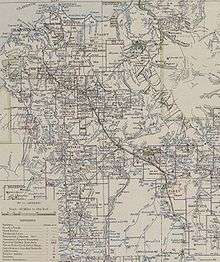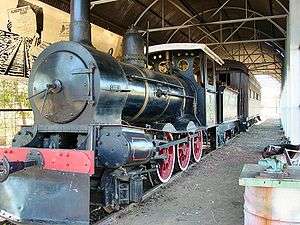North Australia Railway
| North Australia Railway | ||||||||||||||||||||||||||||||||||||||||||||||||||||||||||||||||||||||||||||||||||||||||||||||||||||||||||||||||||||||||||||||||||||||||||||||||||||||||||||||||||||||||||||||||||||||||||||||||||||||||||||||||||||||||||||||||||||||||||||||||||||||||||||||||||||||||||||||||||||||||||||||||||||||||||||||||||||||||||||||||||||||||||||||||||||||||||||||||||||||||||||||||||||||||||||||||||||||||||||||||||||||||||||||||||||||||||||||||||||||||||||||||||||||||||||||||||||||||||||||||||||||||||||||||||||||||||||||||||||||||||||||||||||||||||||||||||||||||||||||||||||||||||||||||
|---|---|---|---|---|---|---|---|---|---|---|---|---|---|---|---|---|---|---|---|---|---|---|---|---|---|---|---|---|---|---|---|---|---|---|---|---|---|---|---|---|---|---|---|---|---|---|---|---|---|---|---|---|---|---|---|---|---|---|---|---|---|---|---|---|---|---|---|---|---|---|---|---|---|---|---|---|---|---|---|---|---|---|---|---|---|---|---|---|---|---|---|---|---|---|---|---|---|---|---|---|---|---|---|---|---|---|---|---|---|---|---|---|---|---|---|---|---|---|---|---|---|---|---|---|---|---|---|---|---|---|---|---|---|---|---|---|---|---|---|---|---|---|---|---|---|---|---|---|---|---|---|---|---|---|---|---|---|---|---|---|---|---|---|---|---|---|---|---|---|---|---|---|---|---|---|---|---|---|---|---|---|---|---|---|---|---|---|---|---|---|---|---|---|---|---|---|---|---|---|---|---|---|---|---|---|---|---|---|---|---|---|---|---|---|---|---|---|---|---|---|---|---|---|---|---|---|---|---|---|---|---|---|---|---|---|---|---|---|---|---|---|---|---|---|---|---|---|---|---|---|---|---|---|---|---|---|---|---|---|---|---|---|---|---|---|---|---|---|---|---|---|---|---|---|---|---|---|---|---|---|---|---|---|---|---|---|---|---|---|---|---|---|---|---|---|---|---|---|---|---|---|---|---|---|---|---|---|---|---|---|---|---|---|---|---|---|---|---|---|---|---|---|---|---|---|---|---|---|---|---|---|---|---|---|---|---|---|---|---|---|---|---|---|---|---|---|---|---|---|---|---|---|---|---|---|---|---|---|---|---|---|---|---|---|---|---|---|---|---|---|---|---|---|---|---|---|---|---|---|---|---|---|---|---|---|---|---|---|---|---|---|---|---|---|---|---|---|---|---|---|---|---|---|---|---|---|---|---|---|---|---|---|---|---|---|---|---|---|---|---|---|---|---|---|---|---|---|---|---|---|---|---|---|---|---|---|---|---|---|---|---|---|---|---|---|---|---|---|---|---|---|---|---|---|---|---|---|---|---|---|---|---|---|---|---|---|---|---|---|---|---|---|---|---|---|---|---|---|---|---|---|---|---|---|---|---|---|---|---|---|---|---|---|---|---|---|---|---|---|---|---|---|---|---|---|---|---|---|---|---|---|---|---|---|---|---|---|---|---|---|---|---|---|---|---|---|---|---|---|---|---|---|---|---|---|---|---|---|---|---|---|---|---|---|---|---|---|---|---|---|---|---|---|---|---|---|---|---|---|---|---|---|---|---|---|---|---|---|---|---|---|---|---|---|---|---|
| Technical | ||||||||||||||||||||||||||||||||||||||||||||||||||||||||||||||||||||||||||||||||||||||||||||||||||||||||||||||||||||||||||||||||||||||||||||||||||||||||||||||||||||||||||||||||||||||||||||||||||||||||||||||||||||||||||||||||||||||||||||||||||||||||||||||||||||||||||||||||||||||||||||||||||||||||||||||||||||||||||||||||||||||||||||||||||||||||||||||||||||||||||||||||||||||||||||||||||||||||||||||||||||||||||||||||||||||||||||||||||||||||||||||||||||||||||||||||||||||||||||||||||||||||||||||||||||||||||||||||||||||||||||||||||||||||||||||||||||||||||||||||||||||||||||||||
| Line length | 316 mi (509 km) | |||||||||||||||||||||||||||||||||||||||||||||||||||||||||||||||||||||||||||||||||||||||||||||||||||||||||||||||||||||||||||||||||||||||||||||||||||||||||||||||||||||||||||||||||||||||||||||||||||||||||||||||||||||||||||||||||||||||||||||||||||||||||||||||||||||||||||||||||||||||||||||||||||||||||||||||||||||||||||||||||||||||||||||||||||||||||||||||||||||||||||||||||||||||||||||||||||||||||||||||||||||||||||||||||||||||||||||||||||||||||||||||||||||||||||||||||||||||||||||||||||||||||||||||||||||||||||||||||||||||||||||||||||||||||||||||||||||||||||||||||||||||||||||||
| Track gauge | 3 ft 6 in (1,067 mm) | |||||||||||||||||||||||||||||||||||||||||||||||||||||||||||||||||||||||||||||||||||||||||||||||||||||||||||||||||||||||||||||||||||||||||||||||||||||||||||||||||||||||||||||||||||||||||||||||||||||||||||||||||||||||||||||||||||||||||||||||||||||||||||||||||||||||||||||||||||||||||||||||||||||||||||||||||||||||||||||||||||||||||||||||||||||||||||||||||||||||||||||||||||||||||||||||||||||||||||||||||||||||||||||||||||||||||||||||||||||||||||||||||||||||||||||||||||||||||||||||||||||||||||||||||||||||||||||||||||||||||||||||||||||||||||||||||||||||||||||||||||||||||||||||
| ||||||||||||||||||||||||||||||||||||||||||||||||||||||||||||||||||||||||||||||||||||||||||||||||||||||||||||||||||||||||||||||||||||||||||||||||||||||||||||||||||||||||||||||||||||||||||||||||||||||||||||||||||||||||||||||||||||||||||||||||||||||||||||||||||||||||||||||||||||||||||||||||||||||||||||||||||||||||||||||||||||||||||||||||||||||||||||||||||||||||||||||||||||||||||||||||||||||||||||||||||||||||||||||||||||||||||||||||||||||||||||||||||||||||||||||||||||||||||||||||||||||||||||||||||||||||||||||||||||||||||||||||||||||||||||||||||||||||||||||||||||||||||||||||
The North Australia Railway (NAR), also known as the Palmerston to Pine Creek railway, was a 3 ft 6 in (1,067 mm) narrow gauge railway in the Northern Territory of Australia which ran from the territory capital of Darwin, once known as Palmerston, to Birdum, just south of Larrimah from 1889 to 1976.
History




In the nineteenth century the Northern Territory was administered by the Government of South Australia. The John Cox Bray Government introduced the Palmerston and Pine Creek Railway Bill in 1883. The £959,300 contract was awarded to C&E Millar of Melbourne on the proviso that they could use coolie labour. The line reached Pine Creek in 1888 and officially opened on 30 September 1889.[1] Singhalese and Indian gangs did the grubbing and earthwork and 3,000 Chinese labourers laid over one kilometre of track per day. A total of 310 bridges and flood openings were built and an interactive map is available at OpenStreetMap
Commonwealth takeover
The Commonwealth Government took control in 1911. It promised to complete the railway from Adelaide to Darwin but gave no dates. The line was extended to near Katherine in 1917, and to Birdum in 1929.
In 1930 a mixed train, called Leaping Lena[2] ran to an established timetable.
- Depart Darwin at 08:00. on Wednesdays
- Arrive at Pine Creek at 16:46
- Depart Pine Creek 08:00 on Thursdays
- Arrive at Katherine 11:00 on Fridays
- Depart Katherine 12:00 Fridays
- Arrive at Birdum 17:51 Fridays
During World War II Larrimah, nine kilometres north of Birdum, became the effective railhead as it was on the Stuart Highway, unlike Birdum. The 100 metre bridge across Birdum Creek is still present. There were locomotive turning triangles at both locations. The busiest time for the railway was during World War II. As many as 247 trains ran per week in 1944.
Proposed extensions
A railway line from Alice Springs to Darwin had been discussed and promised by politicians for many years. A railway between Alice Springs and Birdum was proposed as early as 1918, before the two lines had reached those locations.[3][4] A private company proposed a railway from Birdum to Bourke, New South Wales in 1932.[5][6]
Following the outbreak of the Pacific War, the Australian Army surveyed a rail route from Alice Springs to Birdum in 1942[7][8] and from Mount Isa, Queensland to Birdum via Tennant Creek in 1943.[9]
A railway from Dajarra, Queensland to Birdum was considered in 1952-53[10] but the Cabinet decided not to proceed.[11] Construction of a standard gauge railway to Darwin was first seriously proposed in 1965 when construction of a new standard gauge line to Alice Springs was discussed.[12]
Closure and completion
The Federal Government promulgated an order to close the narrow gauge North Australia Railway line on 20 May 1976, with services ceasing on 30 June of that year, as result of the loss of iron ore traffic originating from the Frances Creek operation. Maintenance gangs were withdrawn in December 1977. Heavy floods in 1978 destroyed parts of the railway, effectively eliminating any hope of the railway re-opening. In 1985, some rails and sleepers were lifted and sent to AN Tasrail.[13]
Nearly 20 years later, the AustralAsia Rail Corporation a consortium was formed to build the standard gauge link between Alice Springs and Darwin.
Construction on the new standard gauge line from Alice Springs lasted from July 2001 to 17 September 2003. The first freight train reached Darwin on 17 January 2004 and the first Ghan passenger service ran from Adelaide to Darwin in early February 2004. The line uses 198 kilometers of the original 511 kilometer route between Adelaide River and Emungalan, just north of Katherine; however, the Fergusson River bridge was the only bridge strengthened and re-used.[14]
The Pine Creek railway station is on the National List of Significant Places at the National Trust of Australia. The railway station and its immediate precinct was listed on the now-defunct Register of the National Estate on 21 October 1980 and on the Northern Territory Heritage Register on 6 April 1994.[15][16]
References
Notes
- ↑ "The Palmerston and Pine Creek Railway" Australian Railway Historical Society Bulletin February/March 1968 pp25-48; 63-71
- ↑ "The Darwin Sentinel - Leaping Lena" Australian Railway Historical Society Bulletin February 1987 pp35-40
- ↑ Alice Springs - Birdum Railway Proposal 1918, NAA B300 5497/4, National Archives of Australia
- ↑ Port Augusta - Darwin Railway (1920), NAA A458 C206/2/57, National Archives of Australia
- ↑ JA Hobler Development of the Northern Territory Birdum - Bourke Railway, NAA: A1 1932/3302, National Archives of Australia.
- ↑ Bourke to Darwin railway proposition, NAA B300 7513, National Archives of Australia
- ↑ Alice Springs - Birdum Railway Proposal, NAA B300 5497/4, National Archives of Australia
- ↑ Darwin - Planning: Alice Springs - Birdum Railway, NAA: AWM54 625/5/23, 1942. (File in custody of Australian War Memorial.)
- ↑ Proposed Railway from Mt Isa to Birdum. Also, Condition of Railway between Hughenden and Duchess, NAA: MP742/1 325/45/200, National Archives of Australia.
- ↑ Construction of railway from Dajarra, Queensland to Birdum, Northern Territory, NAA: A4940 C672, National Archives of Australia.
- ↑ Construction of railway from Dajarra (Queensland) to Birdum (Northern Territory) - no decision, NAA: A4905 564, National Archives of Australia.
- ↑ Alice Springs - Birdum NT railway proposal: NT standard gauge railway, Alice Springs - Darwin intergovernmental study 1965, NAA: B300 5497/5, National Archives of Australia.
- ↑ Harvey, JY (1987). The Never-Never Line. South Yarra: Hyland House. pp. 219–221. ISBN 0 947062 20 3.
- ↑ "RailPage -Darwin Railway and NAR infrastructure?". Railpage. 16 November 2015. Retrieved 12 June 2018.
- ↑ "Pine Creek Railway Precinct, Main Tce, Pine Creek, NT, Australia - listing on the now-defunct Register of the National Estate (Place ID 35)". Australian Heritage Database. Department of the Environment. 21 October 1980. Retrieved 12 June 2018.
- ↑ "Pine Creek Railway Precinct". Northern Territory Heritage Register. Northern Territory Government. 6 April 1994. Retrieved 12 June 2018.
Bibliography
- Anchen, Nick (2017). Iron Roads in the Outback: The Legendary Commonwealth Railways. Ferntree Gully, Vic: Sierra Publishing. ISBN 9780992538828.
External links

- Pine Creek NT
- Walkabout page on Pine Creek
- 1930 Pastoral map showing railway - Northern Territory Library
_to_Pine_Creek_railway.jpg)